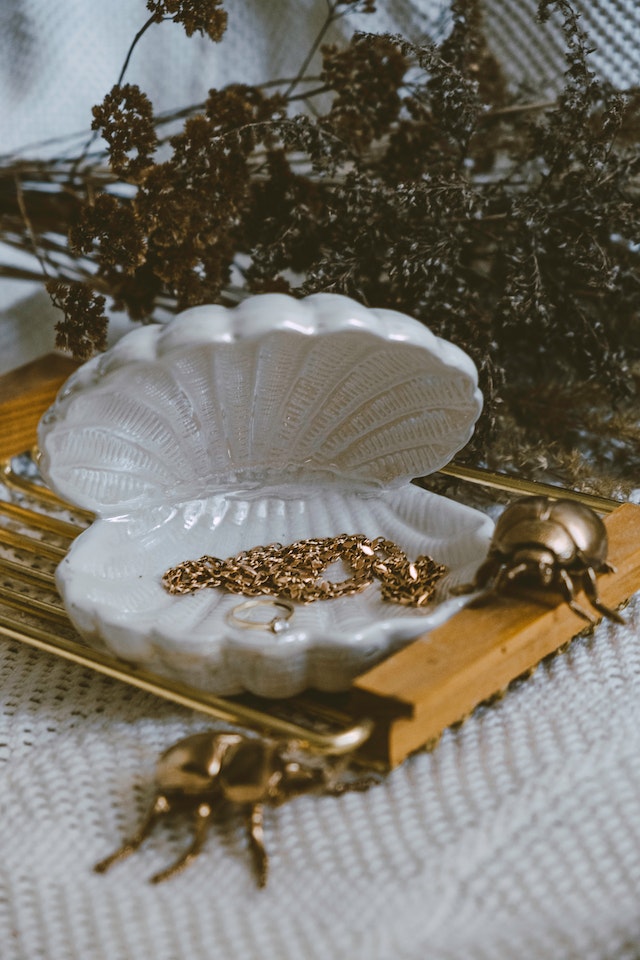Introduction: Jewelry has been an integral part of human culture for thousands of years. From ancient civilizations to modern societies, the allure of sparkling gems, intricate designs, and the ability to adorn oneself with precious materials has captivated people throughout history. Join us as we embark on a fascinating journey through the annals of jewelry history, exploring the evolution, symbolism, and cultural significance of these timeless adornments.
- The Birth of Adornment: Ancient Origins We begin our exploration by delving into the origins of jewelry. From the earliest known examples found in archaeological sites to ancient Egyptian and Mesopotamian civilizations, discover how jewelry played a pivotal role in religious rituals, social hierarchies, and personal adornment. Uncover the significance of amulets, talismans, and symbols used to ward off evil spirits or bring luck and protection.
- Gleaming Testaments of the Ancient World: Greek and Roman Influence In this chapter, we delve into the classical era and explore the exquisite jewelry of ancient Greece and Rome. Discover the meticulous craftsmanship, intricate filigree work, and the use of precious gemstones. Learn how jewelry became a status symbol for the elite and a means of expressing one’s wealth and power.
- The Medieval Era: Symbolism and Spirituality Step into the medieval world, where jewelry took on a new meaning as a reflection of religious devotion and spiritual symbolism. Explore the ornate craftsmanship of Byzantine jewelry and the intricate designs of Celtic adornments. Delve into the use of precious gemstones and the significance of symbols such as crosses, fleur-de-lis, and heraldic motifs.
- Renaissance and Baroque Splendor: A Golden Age of Jewelry During the Renaissance and Baroque periods, jewelry reached new heights of opulence and extravagance. Discover the grandeur of courtly jewelry and the patronage of royalty and nobility. Explore the use of pearls, diamonds, and intricate enameling techniques. Learn about the iconic jewelry styles that emerged, such as the French “garland” style and the ornate Mughal jewelry of India.
- The Age of Enlightenment: Simplicity and Sentimentality As societal values shifted during the Age of Enlightenment, jewelry took on a more understated and sentimental tone. Explore the rise of sentimental jewelry, mourning jewelry, and the use of gemstones with symbolic meanings. Uncover the rise of art movements such as the Georgian and Victorian eras, which brought forth new design aesthetics and a deeper emphasis on personal expression.
- Art Nouveau to Modernism: Embracing Innovation and Individuality In this chapter, we explore the transformative periods of Art Nouveau, Art Deco, and the Modernist movements. Witness the shift from traditional designs to bold, abstract forms, geometric patterns, and experimental materials. Discover how jewelry became a means of self-expression, challenging societal norms and embracing innovation.
- Contemporary Expressions: The Jewelry of Today In our final chapter, we celebrate the diverse and vibrant landscape of contemporary jewelry. From traditional craftsmanship to cutting-edge techniques, explore the work of modern jewelers who continue to push boundaries and create wearable art. Discover the fusion of traditional and contemporary elements, sustainable jewelry practices, and the rising importance of ethical sourcing.
Conclusion: As we conclude our journey through jewelry history, we are left in awe of the enduring beauty, craftsmanship, and cultural significance that jewelry has held throughout the ages. From ancient talismans to modern statements, jewelry continues to captivate us, telling stories of human creativity, spirituality, and personal expression. By understanding the rich tapestry of jewelry history, we gain a deeper appreciation for the treasures we wear and the legacies they carry forward.
